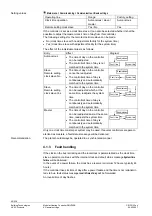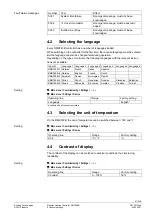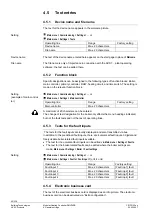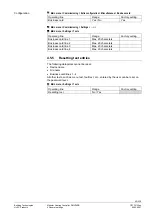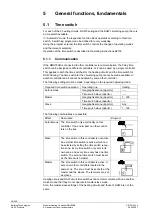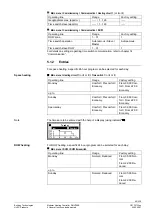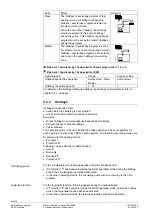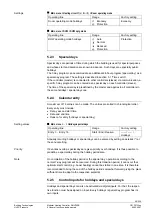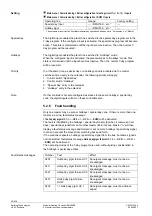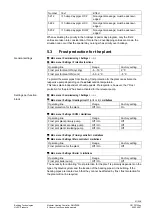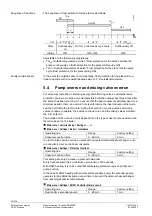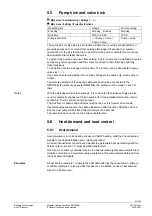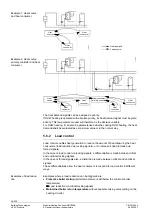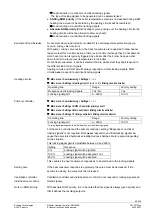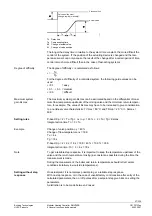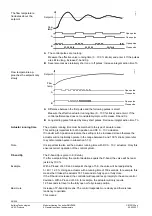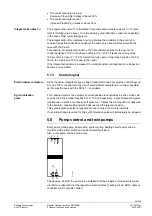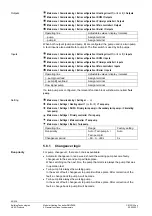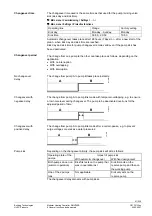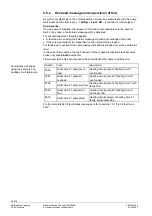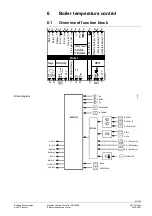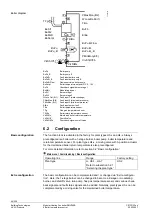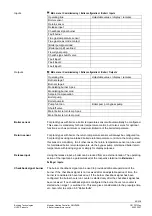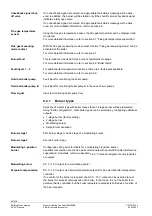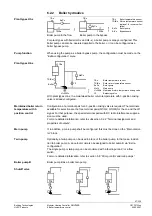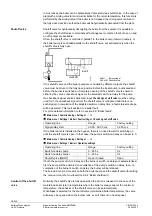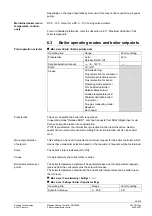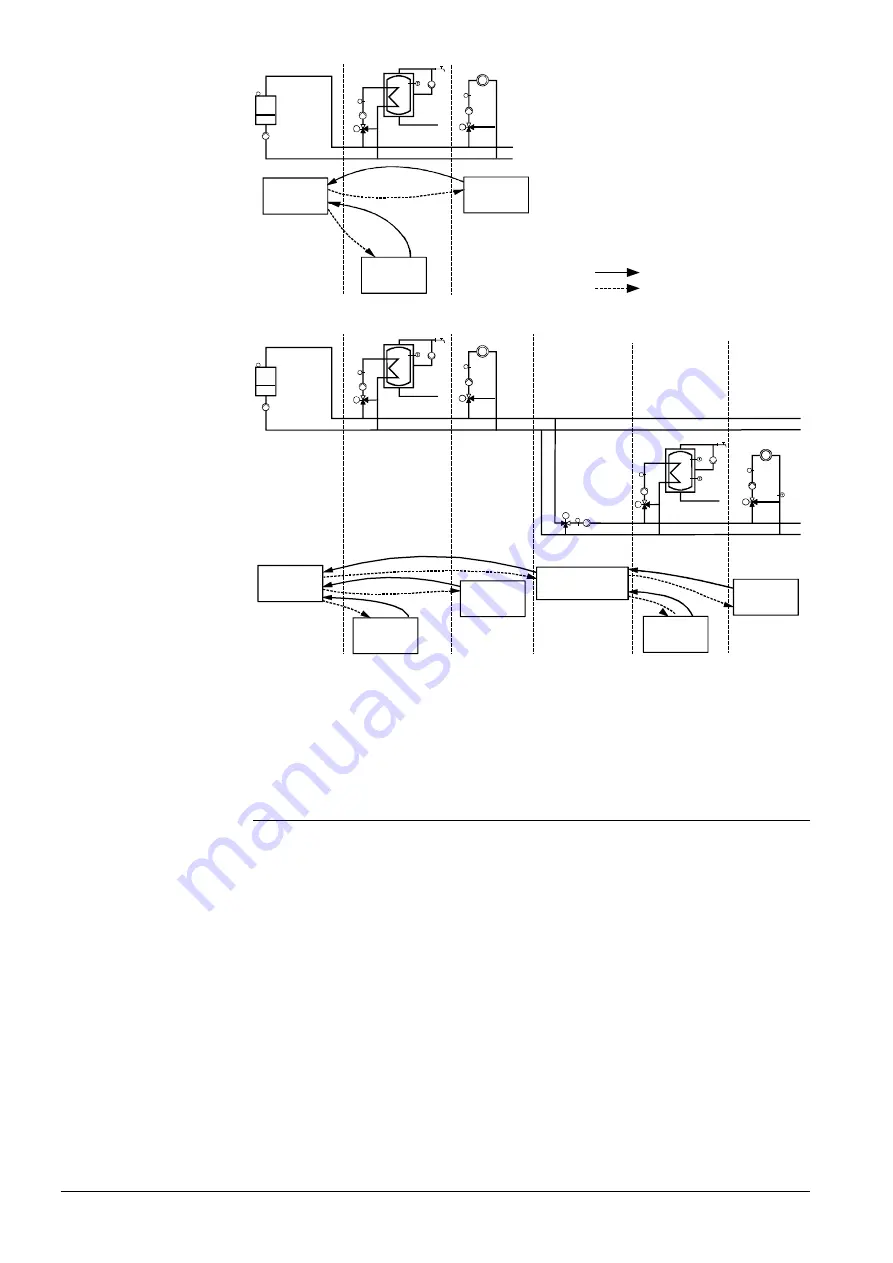
54/238
Building Technologies
Modular Heating Controller RMH760B
CE1P3133en
HVAC Products
5 General functions, fundamentals
05.02.2007
T
T
31
31
B
1
5
T
Heat
consumer
Heat
source
Heat
consumer
Heat demand
Load control
T
T
31
31
B
1
7
T
T
T
T
Heat
source
Heat
consumer
Heat
consumer
Heat
consumer
Heat
consumer
Heat consumer /
primary controller
The heat demand signals can be assigned a priority.
If DHW heating is operated with absolute priority, its heat demand signal must be given
priority. This temperature request will therefore be the decisive variable.
For DHW heating, it can also be parameterized whether, during DHW heating, the heat
demand shall be evaluated as a maximum value or in the normal way.
5.6.2
Load control
Load control enables heat generation to reduce the amount of heat drawn by the heat
consumers (load reduction via locking signals), or to increase it (load increase via
forced signals).
In the case of load control via locking signals, a differentiation is made between critical
and uncritical locking signals.
In the case of forced signals also, a distinction is made between critical and uncritical
signals.
These differentiations allow the heat consumers to respond to load control in different
ways.
Examples where a load reduction can be triggered are:
•
Protective boiler startup
(boiler temperature is still below the minimum boiler
temperature):
⇒
Load reduction via critical locking signals
•
Maintained boiler return temperature
without separate mixing valve (acting on the
heating circuits):
Example 1: Heat source
and heat consumer
Example 2: Heat source,
primary controller and heat
consumer
Examples of load reduc-
tion

